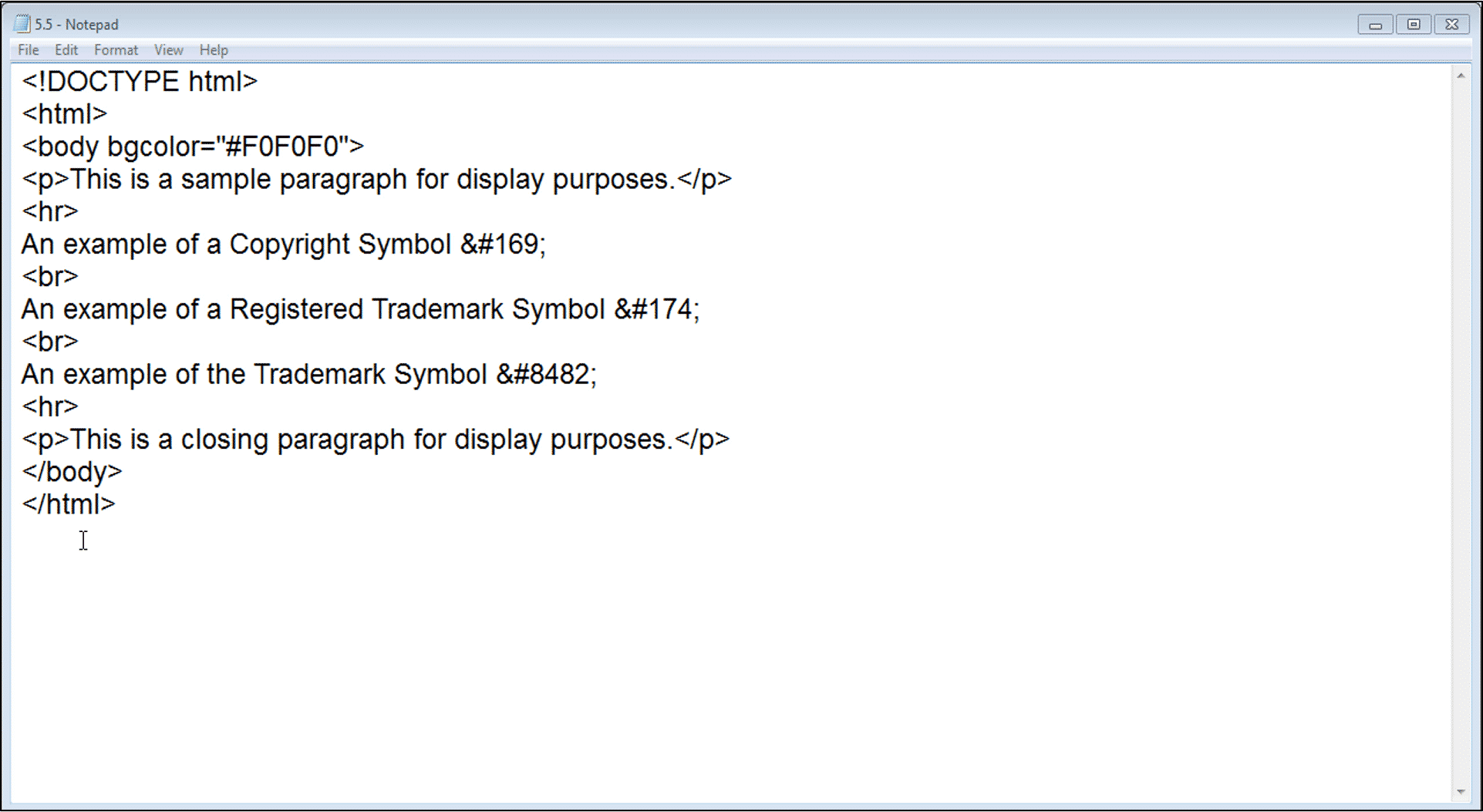

- HTML E WITH TILDE OVER IT PRO
- HTML E WITH TILDE OVER IT MAC
Also stress-related are the different spellings of the words en/én and et/ét (the indefinite article and the word "one" in Danish and Norwegian).
 Norwegian, Swedish and Danish use the acute accent to indicate that a terminal syllable with the e is stressed and is often omitted if it does not change the meaning: armen (first syllable stressed) means "the arm" while armé(e)n means "the army" ide (first syllable stressed) means "bear's den" while idé means "idea". Navajo where the acute marks a higher tone. Modern Greek marks the stressed vowel of every polysyllabic word: ά ( á), έ ( é), ή ( í), ί ( í), ό ( ó), ύ ( í), ώ ( ó). Leonese uses it for marking stress or disambiguation. For example, kákhi "in that direction" but kakhí "take something to someone back there". For example, pèsca "peach" ("open" or "wide" vowel, as in "pen") and pésca "fishing" ("closed" or "narrow" vowel, as in "pain") it should be noted, however, that these two words are usually pronounced the same way, which varies with region. Italian The accent is used to indicate the stress in a word, or whether the vowel is "open" or "wide", or "closed", or "narrow". Sometimes, it is simply used for disambiguation, as in één – een, meaning "one" and "a(n)". Dutch uses it to mark stress ( vóórkomen – voorkómen, meaning occur and prevent respectively) or a more closed vowel ( hé – hè, equivalent to English hey and heh) if it is not clear from context. Catalan uses it in stressed vowels: é, í, ó, ú. However, Bulgarian usually uses the grave accent to mark the vowel in a stressed syllable, unlike Russian, which uses the acute accent. Bulgarian: stress, which is variable in Bulgarian, is not usually indicated in Bulgarian except in dictionaries and sometimes in homonyms that are distinguished only by stress. Blackfoot uses acute accents to show the place of stress in a word: soyópokistsi "leaves". The acute accent marks the stressed vowel of a word in several languages: ( October 2021) ( Learn how and when to remove this template message) Unsourced material may be challenged and removed. Please help improve this section by adding citations to reliable sources. I think those instructions will work but I once again have to offer my at-work, no-Mac, I-didn't-test disclaimer.This section does not cite any sources. You may want to look at this thread if you want to make your own special-character-input scripts, or maybe at this page of this book if you want to memorize all of the special-input key combos so you can specify e-with-acute and a-with-acute and whatever-with-cedilla directly, rather than trying to use combining accents. I handle a vast amount of Vietnamese text, so I run into this kind of issue all the time. (Note that I'm not not not suggesting that you use TNR in your layout, I just picked it because it's a font that I know everybody has that also contains combining accents.) But if you use your method to type an acute accent on a font that actually has a combining accent, and then select that combined e-plus-combining-acute glyph and change it to Minion Pro, then in the glyphs menu it'll show up as a precomposed e-with-acute. Your method did not work for me with Minion Pro, but it does work with Times New Roman.
Norwegian, Swedish and Danish use the acute accent to indicate that a terminal syllable with the e is stressed and is often omitted if it does not change the meaning: armen (first syllable stressed) means "the arm" while armé(e)n means "the army" ide (first syllable stressed) means "bear's den" while idé means "idea". Navajo where the acute marks a higher tone. Modern Greek marks the stressed vowel of every polysyllabic word: ά ( á), έ ( é), ή ( í), ί ( í), ό ( ó), ύ ( í), ώ ( ó). Leonese uses it for marking stress or disambiguation. For example, kákhi "in that direction" but kakhí "take something to someone back there". For example, pèsca "peach" ("open" or "wide" vowel, as in "pen") and pésca "fishing" ("closed" or "narrow" vowel, as in "pain") it should be noted, however, that these two words are usually pronounced the same way, which varies with region. Italian The accent is used to indicate the stress in a word, or whether the vowel is "open" or "wide", or "closed", or "narrow". Sometimes, it is simply used for disambiguation, as in één – een, meaning "one" and "a(n)". Dutch uses it to mark stress ( vóórkomen – voorkómen, meaning occur and prevent respectively) or a more closed vowel ( hé – hè, equivalent to English hey and heh) if it is not clear from context. Catalan uses it in stressed vowels: é, í, ó, ú. However, Bulgarian usually uses the grave accent to mark the vowel in a stressed syllable, unlike Russian, which uses the acute accent. Bulgarian: stress, which is variable in Bulgarian, is not usually indicated in Bulgarian except in dictionaries and sometimes in homonyms that are distinguished only by stress. Blackfoot uses acute accents to show the place of stress in a word: soyópokistsi "leaves". The acute accent marks the stressed vowel of a word in several languages: ( October 2021) ( Learn how and when to remove this template message) Unsourced material may be challenged and removed. Please help improve this section by adding citations to reliable sources. I think those instructions will work but I once again have to offer my at-work, no-Mac, I-didn't-test disclaimer.This section does not cite any sources. You may want to look at this thread if you want to make your own special-character-input scripts, or maybe at this page of this book if you want to memorize all of the special-input key combos so you can specify e-with-acute and a-with-acute and whatever-with-cedilla directly, rather than trying to use combining accents. I handle a vast amount of Vietnamese text, so I run into this kind of issue all the time. (Note that I'm not not not suggesting that you use TNR in your layout, I just picked it because it's a font that I know everybody has that also contains combining accents.) But if you use your method to type an acute accent on a font that actually has a combining accent, and then select that combined e-plus-combining-acute glyph and change it to Minion Pro, then in the glyphs menu it'll show up as a precomposed e-with-acute. Your method did not work for me with Minion Pro, but it does work with Times New Roman. HTML E WITH TILDE OVER IT PRO
Minion Pro has an acute accent, which is what you get with option-shift-e, but it looks to me like Minion does not have a combining accent, which is what you'd need. My whole job revolves around squeezing 40+ languages into InDesign, so I'm likely to reply to any post that is at all related to non-English stuff. Can you tell us what keystroke(s) you're using, what operating system you're using, and what font you are using? InDesign CS5 is occasionally flaky about "combining accents" but if your font doesn't have the combining glyphs I think it simply won't work. Is this something that broke in CS5 and just needs to be fixed? InDesign is not allowing me to have the accent over the letter. I even looked it up online to get the correct keystrokes for the correct direction and accent. the backslash on your English-hardware keyboard has been replaced with the cedilla. THis might not work for you because for all such keyboards you wind up needing to memorize that e.g.
:max_bytes(150000):strip_icc()/Tilde-N-c13b05121aeb4965bfa61762ed47ab90.jpg)
HTML E WITH TILDE OVER IT MAC
I'm not sitting at my Mac so I can't recall the precise steps but it's in the same menu area as the Character viewer. In your shoes, I might uinstall a French keyboard. I thought you just bumped an old thread with a post of a solution that doesn't involve typing accents.




:max_bytes(150000):strip_icc()/Tilde-N-c13b05121aeb4965bfa61762ed47ab90.jpg)


 0 kommentar(er)
0 kommentar(er)
